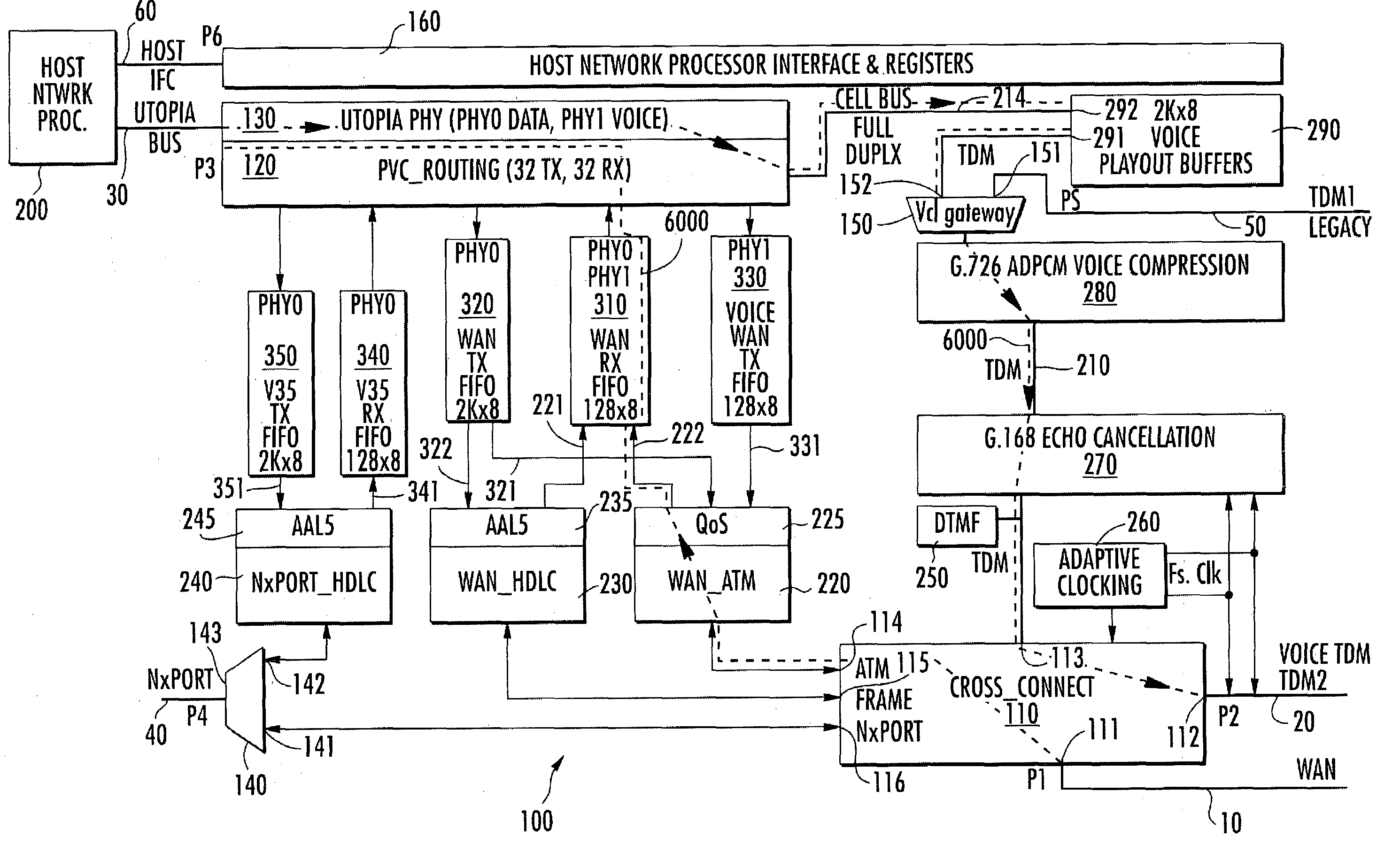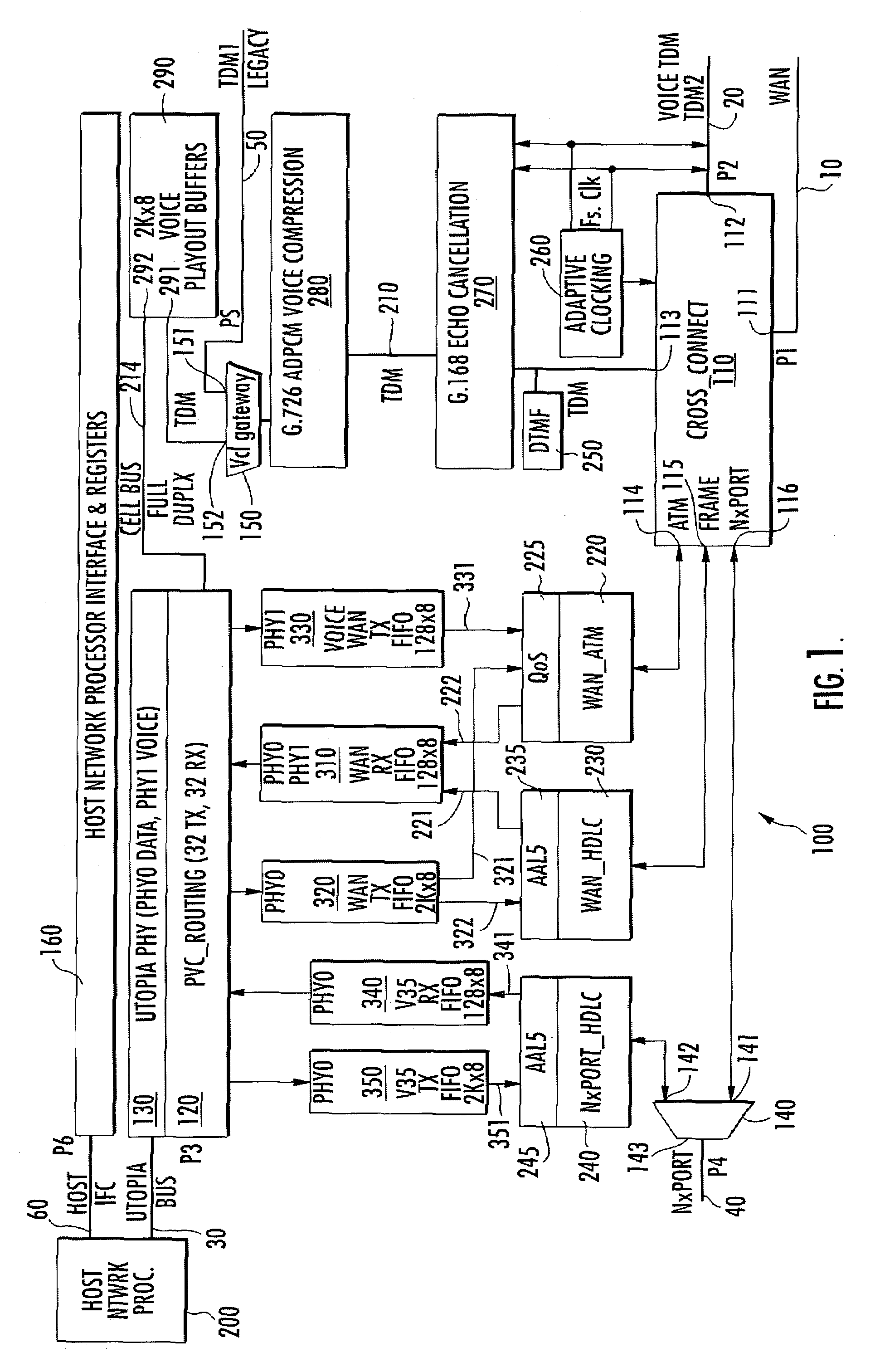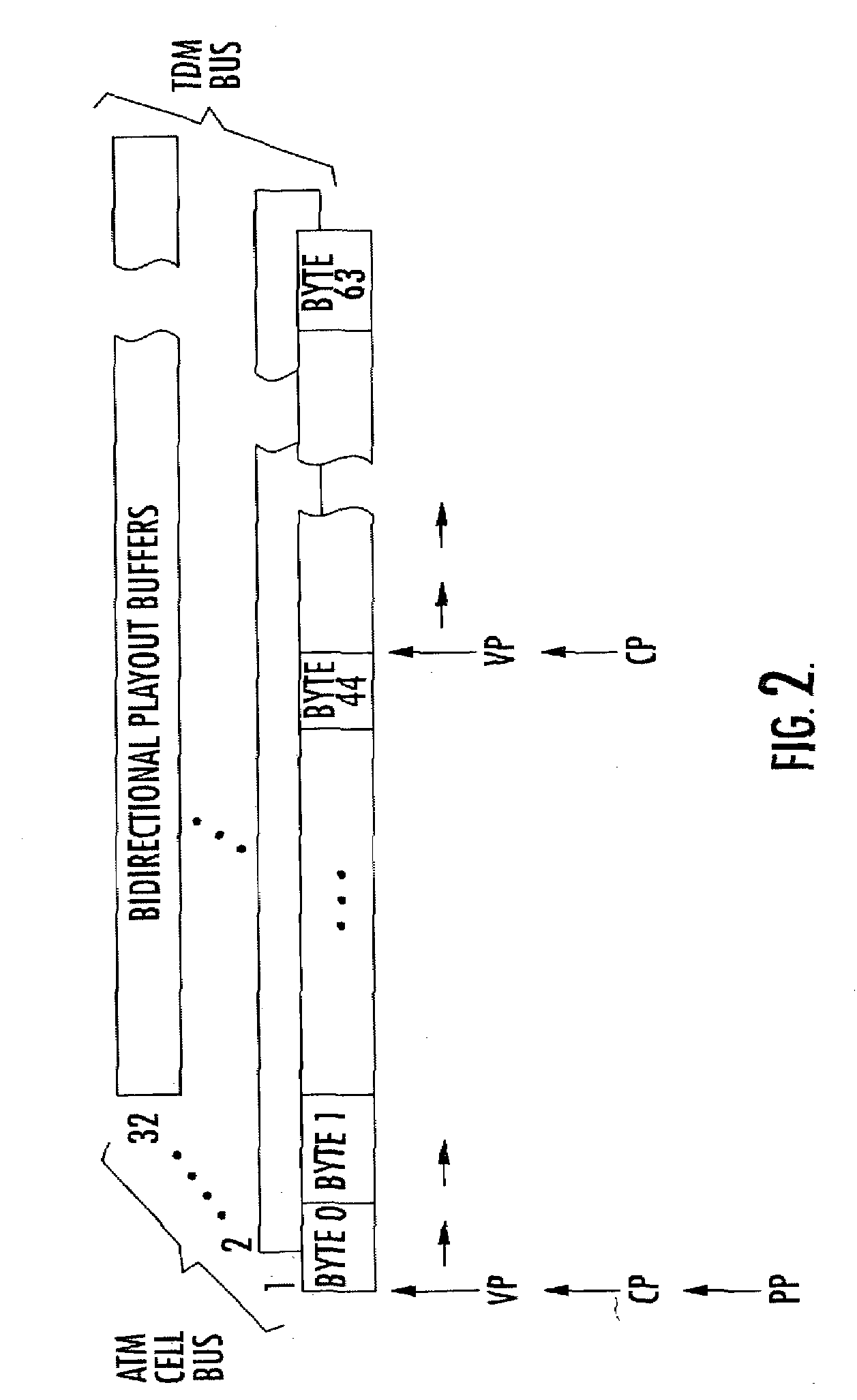Dual-PHY based integrated access device
a dual-phy, integrated access device technology, applied in the direction of digital transmission, data switching network, electrical apparatus, etc., can solve the problems of limiting the flexibility and efficiency of current iad designs in the face of dynamic signaling requirements, and achieve the effect of improving interfacing flexibility
- Summary
- Abstract
- Description
- Claims
- Application Information
AI Technical Summary
Benefits of technology
Problems solved by technology
Method used
Image
Examples
Embodiment Construction
[0044]Before detailing the dual PHY-based integrated access device according to the present invention, it should be observed that the invention resides primarily in a prescribed arrangement of conventional digital communication circuits and components, and an attendant host communications microprocessor, and application software therefore, that controls the operations of such circuits and components. In a practical implementation, the invention may be readily constructed of field programmable gate array (FPGA)-configured, digital application specific integrated circuit (ASIC) chip sets. Consequently, in the drawings, the configuration of such circuits and components, and the manner in which they may be interfaced with various telecommunication circuits have, for the most part, been illustrated by readily understandable block diagrams, which show only those specific details that are pertinent to the present invention, so as not to obscure the disclosure with details which will be rea...
PUM
 Login to View More
Login to View More Abstract
Description
Claims
Application Information
 Login to View More
Login to View More - R&D
- Intellectual Property
- Life Sciences
- Materials
- Tech Scout
- Unparalleled Data Quality
- Higher Quality Content
- 60% Fewer Hallucinations
Browse by: Latest US Patents, China's latest patents, Technical Efficacy Thesaurus, Application Domain, Technology Topic, Popular Technical Reports.
© 2025 PatSnap. All rights reserved.Legal|Privacy policy|Modern Slavery Act Transparency Statement|Sitemap|About US| Contact US: help@patsnap.com



